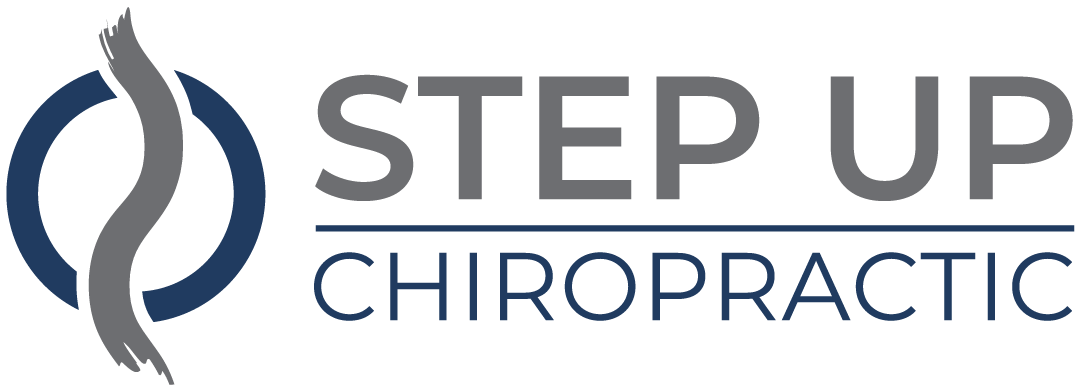If you're grappling with chronic migraines, you know how disruptive they can be to your life. Exploring effective relief strategies is essential, whether it's adjusting your lifestyle, tweaking your diet, or considering medical options. You might find that small changes, like establishing a consistent sleep routine or identifying food triggers, can make a significant impact. But what about the lesser-known therapies that could also offer relief? Understanding these approaches might just lead you to a more manageable life with fewer headaches. Let's consider what might work best for you.
Understanding Chronic Migraines
Chronic migraines can feel like an uninvited guest that overstays its welcome. You might find yourself grappling with these debilitating headaches more than 15 days a month, disrupting your life and routines. Understanding what chronic migraines are is the first step toward managing them effectively. These aren't just ordinary headaches; they come with a range of symptoms including severe throbbing pain, nausea, and sensitivity to light and sound.
You may notice that these migraines can last anywhere from a few hours to several days, making it difficult to keep up with daily responsibilities. Each episode can leave you feeling drained and frustrated, affecting your ability to enjoy life.
It's important to recognize that chronic migraines can stem from various triggers, including stress, hormonal changes, and environmental factors. Identifying these triggers is significant for you to develop a personalized approach to relief.
Moreover, chronic migraines often come with auras, which can manifest as visual disturbances or tingling sensations. Understanding these symptoms can help you differentiate between migraines and other types of headaches.
It's also important to know that they can affect anyone, regardless of age or gender, though they tend to be more common in women.
Finally, don't underestimate the impact of chronic migraines on your mental health. The persistent pain can lead to anxiety or depression, making it imperative to seek support. Recognizing these patterns and symptoms will empower you to take charge of your health and explore effective relief strategies.
Lifestyle Modifications
Making simple lifestyle modifications can greatly ease the burden of chronic migraines. Start by establishing a consistent sleep schedule. Aim for seven to eight hours of quality sleep each night. Going to bed and waking up at the same time daily helps regulate your body's internal clock, which can minimize headache triggers.
Next, prioritize stress management. Chronic stress is a common migraine trigger, so it's crucial to find effective ways to cope. Engage in relaxation techniques like deep breathing, meditation, or yoga. Even a short daily practice can make a significant difference in how you feel.
Physical activity also plays a critical role in your overall well-being. Regular exercise can help reduce the frequency and severity of migraines. Aim for at least 30 minutes of moderate activity most days of the week. Choose activities you enjoy, whether it's walking, cycling, or dancing, as this will keep you motivated.
Stay hydrated, too. Dehydration can trigger migraines, so drink plenty of water throughout the day. Keep a water bottle handy to remind yourself to sip regularly.
Finally, consider creating a migraine diary. Tracking your headaches, activities, and any potential triggers can help you identify patterns and make necessary adjustments. This proactive approach empowers you to take control of your migraines and improve your quality of life.
Dietary Adjustments
When managing chronic migraines, your diet plays a vital role. Identifying trigger foods you need to avoid can help reduce the frequency of your headaches.
At the same time, incorporating nutrient-rich foods into your meals can provide relief and support overall wellness.
Trigger Foods to Avoid
Avoiding certain trigger foods can greatly impact your migraine frequency and severity. Identifying these foods is essential for managing your symptoms effectively. Common culprits include aged cheeses, processed meats, and fermented products, which contain tyramine, a known migraine trigger.
You should also be cautious with foods containing MSG, often found in snacks and take-out meals, as it can provoke headaches. Additionally, artificial sweeteners like aspartame and sucralose may lead to increased migraine attacks, so it's best to steer clear of them.
Caffeinated beverages can have mixed effects; while some people find relief with caffeine, others may experience withdrawal headaches or exacerbation of migraines. Alcohol, particularly red wine and certain beers, is another frequent trigger that you might want to limit.
Finally, don't forget about certain fruits and vegetables. Citrus fruits, bananas, and avocados can trigger migraines in some individuals. Keeping a detailed food diary can help you pinpoint which foods affect you the most.
Beneficial Nutrient-Rich Foods
Incorporating nutrient-rich foods into your diet can greatly aid in managing chronic migraines. Focus on whole foods that provide vital vitamins and minerals, like leafy greens, berries, and nuts. Spinach and kale are high in magnesium, which may help reduce the frequency of migraines.
Berries, rich in antioxidants, can combat inflammation and improve overall brain health.
Don't forget about omega-3 fatty acids found in fatty fish like salmon and walnuts. These healthy fats can support brain function and lower inflammation, making them a great addition to your meals. Additionally, consider including seeds like flaxseeds and chia seeds, which are also high in omega-3s.
Hydration plays an important role too, so drink plenty of water and consume hydrating fruits like watermelon and cucumber. It's vital to maintain a balanced diet, as deficiencies in certain nutrients can trigger migraines.
Lastly, maintaining regular meal times can help stabilize your blood sugar levels, further reducing the likelihood of migraines. By focusing on these nutrient-dense foods, you'll empower your body to better manage chronic migraines and improve your overall well-being.
Medical Treatments
Managing chronic migraines often requires a multifaceted approach, where medical treatments play an essential role in alleviating symptoms. When you're dealing with frequent migraines, it's vital to consult a healthcare professional to tailor a treatment plan that suits your specific needs.
Your doctor might prescribe preventive medications to reduce the frequency and severity of your migraines. These can include beta-blockers, antidepressants, or anticonvulsants. It's important to give these medications time to work, as they often take several weeks before you notice benefits.
For acute attacks, your doctor may recommend triptans, which are designed to relieve migraine symptoms once they start. These medications work by narrowing blood vessels and reducing inflammation. Over-the-counter options like NSAIDs can also be effective for milder attacks, but be careful not to overuse them, as that can lead to rebound headaches.
Another option is CGRP inhibitors, a newer class of medications that have shown promise in preventing migraines. These can be administered via injection or orally, depending on the specific drug.
Don't forget about the importance of keeping a migraine diary. Tracking your symptoms, triggers, and responses to medications can help your healthcare provider refine your treatment plan.
Always communicate openly about what's working and what isn't. With the right medical treatments, you can find relief and regain control over your life.
Alternative Therapies
When it comes to managing chronic migraines, alternative therapies can offer some promising relief.
You might find acupuncture, herbal remedies, and mindfulness techniques helpful in reducing your symptoms.
Let's explore how these options can fit into your overall treatment plan.
Acupuncture Benefits for Migraines
Many people suffering from chronic migraines are turning to acupuncture as a viable alternative therapy. This ancient practice involves inserting thin needles into specific points on your body to stimulate energy flow and promote healing. If you're looking for relief, acupuncture may help reduce the frequency and intensity of your migraines.
Research suggests that acupuncture can decrease tension and improve blood circulation, which often alleviates migraine symptoms. Many patients report experiencing fewer headaches after a series of sessions, with some even enjoying longer-lasting relief. The treatment is generally well-tolerated, and side effects are minimal compared to traditional medications.
During your sessions, you might find that the calming environment and the focus on relaxation also contribute to your overall well-being. Acupuncture encourages your body to release endorphins, which can act as natural painkillers.
To maximize the benefits, it's important to work with a licensed and experienced acupuncturist. They can tailor the treatment plan to your specific needs, helping you address underlying issues that may trigger your migraines.
If you're ready for a holistic approach, consider giving acupuncture a try for your chronic migraines.
Herbal Remedies and Efficacy
Exploring herbal remedies can offer a revitalizing approach to managing chronic migraines. Many people find that certain herbs can help reduce the frequency and severity of their migraine attacks.
For instance, feverfew has long been used for its anti-inflammatory properties, and studies suggest it may decrease migraine occurrences. You might consider adding this herb to your regimen, either in capsule form or as a tea.
Another popular option is butterbur, which has shown promise in clinical trials for preventing migraines. However, be certain to choose a product that's free from harmful alkaloids. You'll want to consult with your healthcare provider before starting any new supplement.
Additionally, peppermint oil can be applied topically to your temples for its cooling effect and potential pain relief. Ginger is another effective remedy, as it may help with nausea associated with migraines.
While herbal remedies can be beneficial, it's crucial to approach them with caution. They may interact with other medications you're taking.
Keep track of your symptoms and discuss any changes with your doctor to guarantee a safe and effective treatment plan tailored to your needs.
Mindfulness and Meditation Techniques
In addition to herbal remedies, incorporating mindfulness and meditation techniques can greatly enhance your approach to managing chronic migraines. These practices help you cultivate awareness of your body and mind, allowing you to identify triggers and reduce stress, which might worsen your symptoms.
Start with simple breathing exercises. Find a quiet space, sit comfortably, and focus on your breath. Inhale deeply through your nose, allowing your abdomen to expand, then exhale slowly through your mouth. This technique not only calms your mind but also helps relieve tension in your body.
Another effective method is guided imagery. Visualize a peaceful scene, like a serene beach or a quiet forest. Immerse yourself in the details—feel the warmth of the sun, hear the waves, and smell the fresh air. This practice can distract your mind from pain and create a sense of relaxation.
Regularly practicing mindfulness and meditation can help you build resilience against migraine attacks over time. Consider setting aside just a few minutes each day to develop these techniques, and you may find your overall migraine frequency and intensity decrease noticeably.
Stress Management Techniques
Managing stress effectively can markedly reduce the frequency and severity of chronic migraines. You mightn't realize it, but stress is a significant trigger for many migraine sufferers. Learning how to manage stress can empower you to take control of your migraines and improve your overall quality of life.
One effective technique is deep breathing. When you feel stress creeping in, take a moment to focus on your breath. Inhale deeply through your nose for a count of four, hold for four, and exhale slowly through your mouth for four. Repeat this cycle several times until you feel calmer.
Another strategy to contemplate is journaling. Writing down your thoughts and feelings can provide an outlet for pent-up emotions and help you identify stressors in your life. By pinpointing these triggers, you can work towards addressing them more effectively.
You may also want to explore progressive muscle relaxation. This technique involves tensing and then relaxing each muscle group in your body, starting from your toes and moving up to your head. This process not only helps relieve physical tension but also promotes mental relaxation.
Lastly, don't underestimate the power of social support. Connecting with friends and family can give you a sense of belonging and reduce feelings of anxiety. Sharing your experiences can lighten your emotional load and provide you with valuable coping strategies.
Exercise and Physical Activity
While it might seem counterintuitive to exercise when you're dealing with chronic migraines, regular physical activity can actually be a powerful ally in reducing their frequency and intensity. Engaging in consistent exercise helps release endorphins, which are natural pain relievers. This can lead to a decrease in migraine symptoms and an overall improvement in your mood.
Start with low-impact activities like walking, swimming, or cycling. These exercises are gentle on your body and still provide significant benefits. Aim for at least 30 minutes of moderate exercise most days of the week. If you're just getting started, break it down into shorter sessions—10 to 15 minutes at a time—and gradually increase your duration as you build endurance.
Yoga and stretching can also be incredibly beneficial for migraine sufferers. They promote relaxation and flexibility while reducing muscle tension. Incorporating deep-breathing exercises into your routine can further enhance these benefits, helping you manage stress, a common migraine trigger.
Always listen to your body. If you notice that certain activities worsen your migraines, modify your routine accordingly. It's crucial to find a balance that works for you.
Additionally, staying hydrated and maintaining proper nutrition will support your exercise efforts.
Incorporating regular physical activity into your lifestyle can be a game changer in managing chronic migraines. You'll not only feel better physically but may also experience fewer migraine days.
Tracking and Identifying Triggers
Identifying and tracking migraine triggers is essential for anyone dealing with chronic migraines. By understanding what sets off your migraines, you can take proactive steps to avoid these triggers and potentially reduce the frequency and severity of your attacks.
Start by keeping a detailed migraine diary. Note the date, time, duration, and intensity of each migraine, along with any activities you engaged in, food you ate, or stress levels you experienced leading up to the attack.
Pay close attention to environmental factors as well. Changes in weather, strong odors, or bright lights can all contribute to migraine onset. You might also want to track your sleep patterns, since both sleep deprivation and oversleeping can trigger migraines.
After a few weeks of diligent tracking, review your entries for patterns. Are there specific foods that seem to correlate with your migraines? Do certain stressors consistently appear before an attack?
Once you've identified your triggers, create a personalized management plan. This might involve avoiding certain foods, adjusting your sleeping routine, or implementing stress-reduction techniques like meditation or yoga.
Remember, it's not always possible to eliminate triggers entirely, but being aware of them can empower you to make informed choices.
Also, consider discussing your findings with a healthcare professional. They can help you further refine your strategies and may suggest additional treatment options tailored to your specific needs.
Conclusion
Incorporating these relief strategies can make a significant difference in managing your chronic migraines. By understanding your condition and making lifestyle changes, dietary adjustments, and exploring medical and alternative therapies, you can take control of your health. Don't forget to track your triggers and practice stress management techniques, as these can further enhance your well-being. Remember, finding the right combination of strategies may take time, but the relief you seek is well worth the effort.




